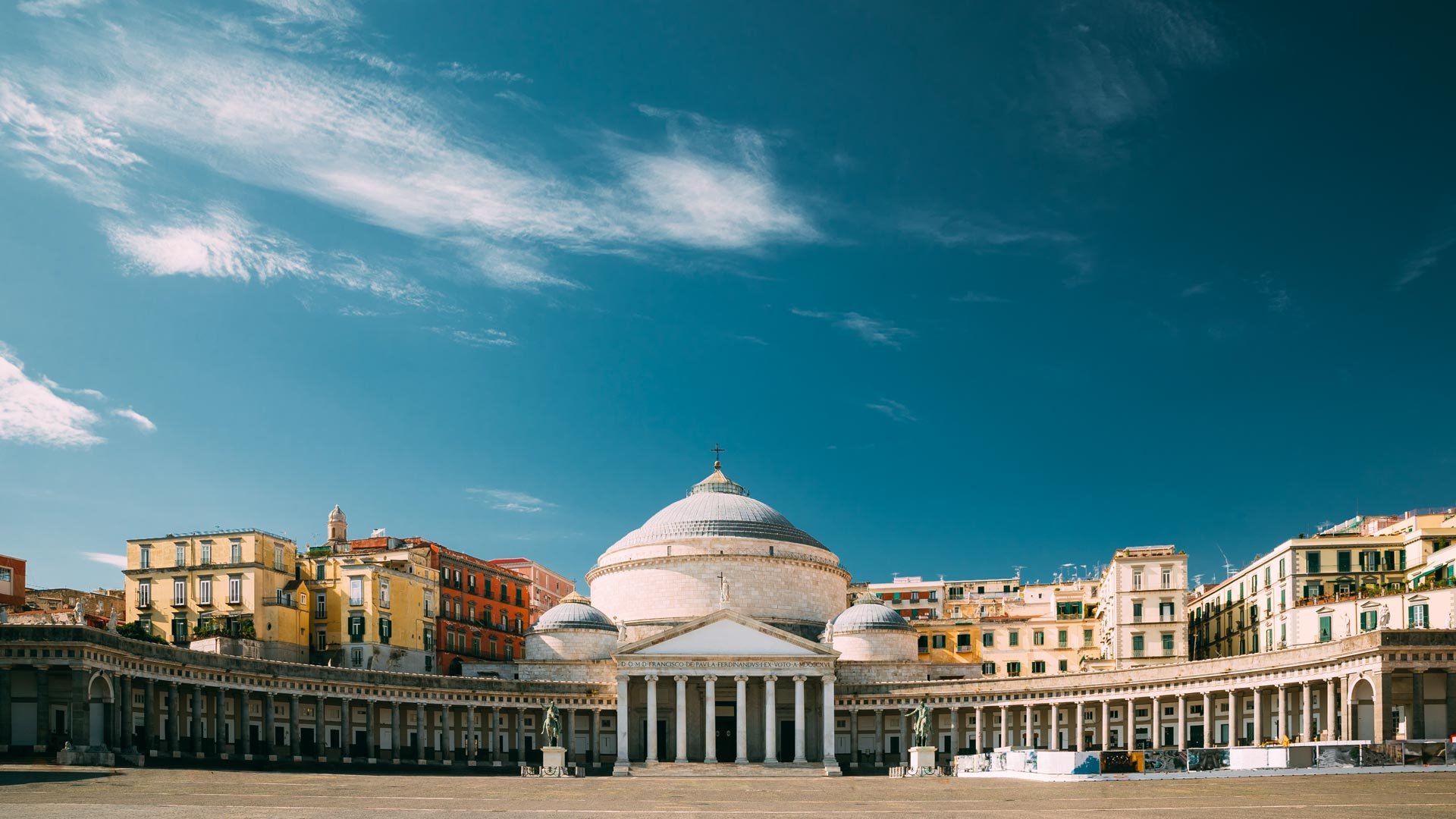ART AND CULTURE
From Churches, to Galleries and Museums there are plenty cultural and artistic sites to explore in Campania.





-

Piazza del Plebiscito
A symbol of Naples, Piazza del Plebiscito is a place where important events take place . However, it is also a meeting place for both Neapolitans and tourists who come here to admire it. The square is very big and it is lined with important buildings, such as the Basilica of San Francesco di Paola, the Royal Palace, the Palace of the Prefecture, and the Palazzo Salerno.
-

Duomo di Napoli
Also known as the cathedral of Santa Maria Assunta, it is one of the most important religious buildings in the city and the place where three times a year you can attend the rite of the dissolution of the blood of San Gennaro, the patron saint of Naples. Those who visit Naples cannot miss the magnificent example of Gothic architecture that is an important symbol not only for the history of Naples but also for all Neapolitan people.
-

Museum of Capodimonte
The National Museum of Capodimonte is located inside the majestic Royal Palace of Capodimonte. It houses collections of both ancient and contemporary works of art, created by the greatest authors of the national scene. The museum houses artworks mainly related to two collections: the Farnese Collection, which includes works by great authors such as Raphael, Titian, Ludovico Carracci, and Guido Reni; and the Neapolitan Gallery, which houses works of art that could once be found in religious buildings in Naples and the surrounding areas.
-

Royal Palace of Naples
The Royal Palace was built at the end of the sixteenth century to welcome and host King Philip III who was supposed to come to visit Naples. The main façade is characterized by the presence of eight niches that guard eight of the most important Kings who ascended the throne of the Kingdom of Naples. Inside you can visit the Historical Apartment, which has now been transformed into a museum. You will have the opportunity to visit the Royal Apartment of the Sovereigns, and the furniture and art collections that decorated the noble floor.
-

Castel dell'Ovo
Consisting of two rocks joined together by a large arch, Castel dell'Ovo is a majestic fortification that, over the centuries, has played not only a defensive role but has also been a monastery, prison and royal residence. Considered one of the symbols of the Neapolitan city, Castel dell'Ovo is the oldest castle in the city of Naples. At its base stands the small port "Borgo Marinari" characterized by restaurants, clubs, bars, and the headquarters of some of the oldest Neapolitan nautical clubs.
-

The Maschio Angioino
The Maschio Angioino, also known as Mastio Angioino or Castel Nuovo, is one of the symbols of the city of Naples and is a historic castle built in 1266. A fortress that had to defend the city from enemy raids. This complex was built in a strategically important position aimed at increasing the defensive system of the city which was already composed of Castel dell'Ovo and Castel Capuano.
-

The Catacombs of San Gennaro
The Catacomb complex of San Gennaro is an underground burial and worship area, situated beneath the city. It was built between the second and the fourth centuries. The underground cemetery proves the existence of a strong relationship between Christianity and the city of Naples.
-

San Gregorio Armeno
Located in the heart of Naples San Gregorio Armeno is one of the most famous streets of the Neapolitan city. Walking through San Gregorio Armeno is a must for Christmas in Naples. However, you can breathe the Christmas atmosphere all year around in this place as there are a lot of shops where you can find crib masters who sell handmade statuettes of characters which are typical of the Neapolitan nativity scene.
